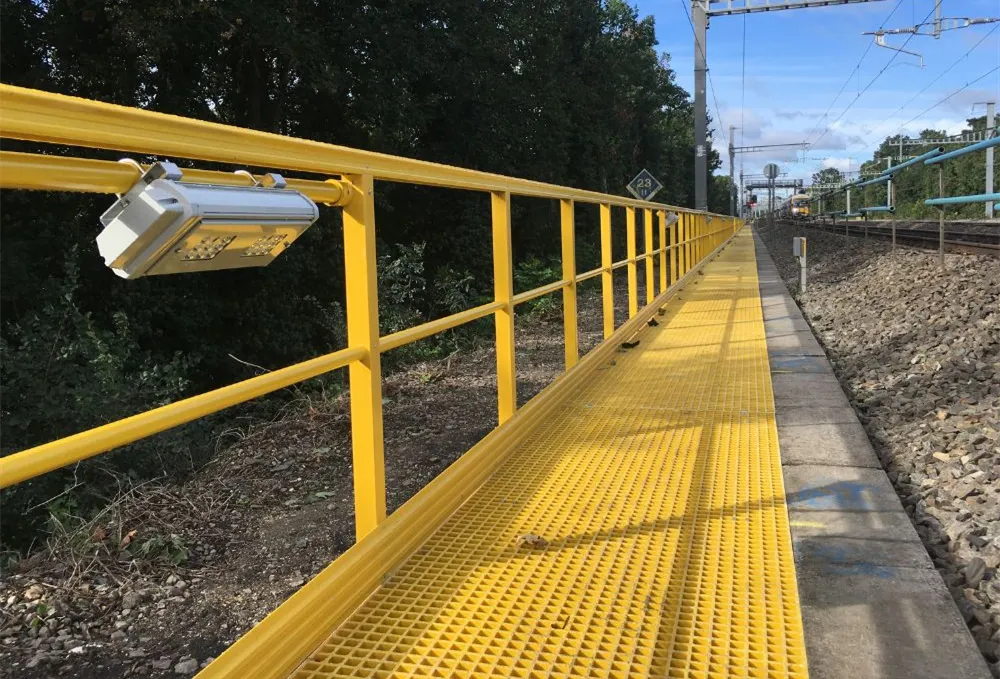loading...
- No. 9, Xingyuan South Street, Dongwaihuan Road, Zaoqiang County, Hengshui, Hebei, China
- admin@zjcomposites.com
- +86 15097380338
- Welcome to visit our website!
galvanized bar grating
The Versatility and Applications of Galvanized Bar Grating
Galvanized bar grating has become an essential component in various industrial and architectural applications due to its durability, versatility, and cost-effectiveness. This type of grating is made from steel bars that are welded together to form a grid-like structure and is then coated with a layer of zinc through a process known as galvanization. The resulting product is not only strong but also resistant to corrosion, making it an ideal choice for diverse environments.
Benefits of Galvanized Bar Grating
One of the primary advantages of galvanized bar grating is its exceptional durability. The galvanization process provides a protective layer that prevents rust and oxidation, significantly extending the lifespan of the grating, especially in harsh environments such as chemical plants, wastewater treatment facilities, and outdoor settings. This long-lasting nature reduces the need for frequent replacements and maintenance, resulting in substantial cost savings for businesses.
Another significant benefit is its lightweight yet strong construction. Galvanized bar grating can bear heavy loads while remaining lightweight enough for easy handling and installation. This characteristic makes it suitable for various applications, from flooring and platforms to walkways and drainage covers.
The open design of bar grating also allows for excellent drainage and ventilation. This feature is particularly valuable in areas where water accumulation or air flow is a concern. By facilitating proper drainage, galvanized bar grating prevents the buildup of puddles and reduces the risk of slips and falls, thereby enhancing safety in both industrial and commercial environments.
Applications of Galvanized Bar Grating
The versatility of galvanized bar grating enables its use in a wide range of applications, making it a popular choice in many industries. Here are some prominent areas where it is commonly employed
galvanized bar grating

1. Industrial Flooring Many factories and industrial plants utilize galvanized bar grating as flooring for work areas, platforms, and walkways. Its slip-resistant surface and durable nature provide safety for workers while allowing for ease of movement of machinery and equipment.
2. Stair Treads and Ladders Galvanized bar grating is also frequently used for stair treads and ladder rungs because of its strength and the natural traction it provides. This helps prevent accidents in high-traffic areas, ensuring that workers can navigate industrial spaces securely.
3. Drainage Covers In drainage systems, galvanized bar grating serves as effective covers that allow water to flow through while preventing debris from clogging the drainage channels. This application is essential in parking lots, roadways, and various outdoor settings.
4. Walkways Outdoor walkways made from galvanized bar grating offer a sturdy solution that withstands the elements. Its open design promotes natural drainage, making it a favored option for walkways in parks, commercial complexes, and recreational areas.
5. Architectural Features Beyond industrial applications, galvanized bar grating is increasingly being used in architectural projects for aesthetic purposes. Its modern appearance and structural integrity make it suitable for use in exteriors, balcony floors, and decorative installations.
6. Machine Guarding In factories and production facilities, guarding machinery is crucial for safety. Galvanized bar grating provides visibility and access while serving as a protective barrier to prevent accidents.
Conclusion
In summary, galvanized bar grating is a versatile and essential material in both industrial and architectural applications. Its combination of durability, lightweight construction, and excellent drainage capabilities make it an ideal choice for a wide range of uses. Whether in factories, outdoor spaces, or architectural projects, the advantages of galvanized bar grating are clear. As industries continue to evolve and demand robust and reliable materials, galvanized bar grating is sure to remain a staple for engineers, architects, and builders alike. Its ability to blend functionality with aesthetic appeal ensures that it will be a preferred choice in future innovations and designs.
-
The Rise of FRP Profiles: Strong, Lightweight, and Built to LastNewsJul.14,2025
-
SMC Panel Tanks: A Modern Water Storage Solution for All EnvironmentsNewsJul.14,2025
-
GRP Grating: A Modern Solution for Safe and Durable Access SystemsNewsJul.14,2025
-
Galvanized Steel Water Tanks: Durable, Reliable, and Ready for UseNewsJul.14,2025
-
FRP Mini Mesh Grating: The Safer, Smarter Flooring SolutionNewsJul.14,2025
-
Exploring FRP Vessels: Durable Solutions for Modern Fluid HandlingNewsJul.14,2025
-
GRP Structures: The Future of Lightweight, High-Performance EngineeringNewsJun.20,2025
